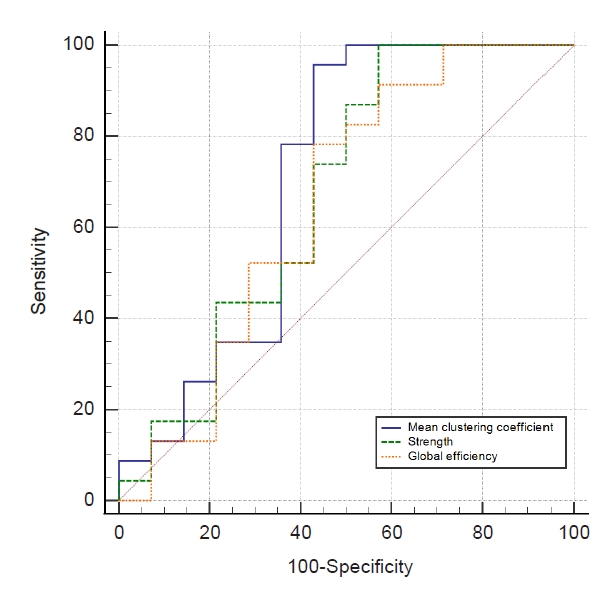2. Kurella Tamura M, Yaffe K. Dementia and cognitive impairment in ESRD: diagnostic and therapeutic strategies.
Kidney Int 2011;79:14ŌĆō22.


4. Pereira AA, Weiner DE, Scott T, et al. Subcortical cognitive impairment in dialysis patients.
Hemodial Int 2007;11:309ŌĆō314.


5. Kurella Tamura M, Larive B, Unruh ML, et al. Prevalence and correlates of cognitive impairment in hemodialysis patients: the Frequent Hemodialysis Network trials.
Clin J Am Soc Nephrol 2010;5:1429ŌĆō1438.


6. Jung YI, Jeong EH, Lee H, et al. Validation of MoCA-MMSE conversion scales in Korean Patients with cognitive impairments.
Dement Neurocogn Disord 2018;17:148ŌĆō155.



7. Folstein MF, Folstein SE, McHugh PR. ŌĆ£Mini-mental stateŌĆØ. A practical method for grading the cognitive state of patients for the clinician.
J Psychiatr Res 1975;12:189ŌĆō198.

8. Tombaugh TN, McIntyre NJ. The mini-mental state examination: a comprehensive review.
J Am Geriatr Soc 1992;40:922ŌĆō935.


9. Nasreddine ZS, Phillips NA, B├®dirian V, et al. The Montreal Cognitive Assessment, MoCA: a brief screening tool for mild cognitive impairment.
J Am Geriatr Soc 2005;53:695ŌĆō699.


10. Tiffin-Richards FE, Costa AS, Holschbach B, et al. The Montreal Cognitive Assessment (MoCA) - a sensitive screening instrument for detecting cognitive impairment in chronic hemodialysis patients.
PLoS One 2014;9:e106700.



11. Angermann S, Baumann M, Steubl D, et al. Cognitive impairment in hemodialysis patients: implementation of cut-off values for the Montreal Cognitive Assessment (MoCA)-test for feasible screening.
PLoS One 2017;12:e0184589.



12. Falsaperla R, Vitaliti G, Marino SD, et al. Graph theory in paediatric epilepsy: a systematic review.
Dialogues Clin Neurosci 2021;23:3ŌĆō13.


13. Farahani FV, Karwowski W, Lighthall NR. Application of graph theory for identifying connectivity patterns in human brain networks: a systematic review.
Front Neurosci 2019;13:585.



15. Park HR, Cha J, Joo EY, Kim H. Altered cerebrocerebellar functional connectivity in patients with obstructive sleep apnea and its association with cognitive function.
Sleep 2022;45:zsab209.



16. Litwińczuk MC, Muhlert N, Cloutman L, Trujillo-Barreto N, Woollams A. Combination of structural and functional connectivity explains unique variation in specific domains of cognitive function.
Neuroimage 2022;262:119531.


17. Babaeeghazvini P, Rueda-Delgado LM, Gooijers J, Swinnen SP, Daffertshofer A. Brain structural and functional connectivity: a review of combined works of diffusion magnetic resonance imaging and electro-encephalography.
Front Hum Neurosci 2021;15:721206.



18. Dharan AL, Bowden SC, Lai A, et al. Source data from a systematic review and meta-analysis of EEG and MEG studies investigating functional connectivity in idiopathic generalized epilepsy.
Data Brief 2021;39:107665.



19. Shim HK, Lee HJ, Kim SE, Lee BI, Park S, Park KM. Alterations in the metabolic networks of temporal lobe epilepsy patients: a graph theoretical analysis using FDG-PET.
Neuroimage Clin 2020;27:102349.



21. Eastmond C, Subedi A, De S, Intes X. Deep learning in fNIRS: a review.
Neurophotonics 2022;9:041411.



23. Lee YJ, Park SY, Sung LY, et al. Reduced left ventrolateral prefrontal cortex activation during verbal fluency tasks is associated with suicidal ideation severity in medication-naïve young adults with major depressive disorder: a functional near-infrared spectroscopy study.
Psychiatry Res Neuroimaging 2021;312:111288.


24. Levey AS, Eckardt KU, Dorman NM, et al. Nomenclature for kidney function and disease: report of a Kidney Disease: Improving Global Outcomes (KDIGO) Consensus Conference.
Kidney Int 2020;97:1117ŌĆō1129.

25. Choi JK, Choi MG, Kim JM, Bae HM. Efficient data extraction method for near-infrared spectroscopy (NIRS) systems with high spatial and temporal resolution.
IEEE Trans Biomed Circuits Syst 2013;7:169ŌĆō177.


26. Kim TJ, Kim JM, Lee JS, et al. Prognostication of neurological outcome after cardiac arrest using wavelet phase coherence analysis of cerebral oxygen.
Resuscitation 2020;150:41ŌĆō49.


27. Mijalkov M, Kakaei E, Pereira JB, Westman E, Volpe G; AlzheimerŌĆÖs Disease Neuroimaging Initiative. BRAPH: a graph theory software for the analysis of brain connectivity.
PLoS One 2017;12:e0178798.



28. Collins AJ, Kasiske B, Herzog C, et al. Excerpts from the United States Renal Data System 2006 Annual Data Report. Am J Kidney Dis 2007;49:A6-A7, S1-S296.
29. Kurella M, Mapes DL, Port FK, Chertow GM. Correlates and outcomes of dementia among dialysis patients: the Dialysis Outcomes and Practice Patterns Study.
Nephrol Dial Transplant 2006;21:2543ŌĆō2548.


30. Sehgal AR, Grey SF, DeOreo PB, Whitehouse PJ. Prevalence, recognition, and implications of mental impairment among hemodialysis patients.
Am J Kidney Dis 1997;30:41ŌĆō49.


31. Ikram MA, Vernooij MW, Hofman A, Niessen WJ, van der Lugt A, Breteler MM. Kidney function is related to cerebral small vessel disease.
Stroke 2008;39:55ŌĆō61.


32. Heo CM, Lee WH, Park BS, et al. Glymphatic dysfunction in patients with end-stage renal disease.
Front Neurol 2021;12:809438.


33. Heo CM, Lee DA, Park KM, et al. Glymphatic system dysfunction in patients with early chronic kidney disease.
Front Neurol 2022;13:976089.



34. Taoka T, Masutani Y, Kawai H, et al. Evaluation of glymphatic system activity with the diffusion MR technique: diffusion tensor image analysis along the perivascular space (DTI-ALPS) in AlzheimerŌĆÖs disease cases.
Jpn J Radiol 2017;35:172ŌĆō178.



35. Vecchio F, Miraglia F, Maria Rossini P. Connectome: graph theory application in functional brain network architecture.
Clin Neurophysiol Pract 2017;2:206ŌĆō213.



36. Wang R, Liu M, Cheng X, Wu Y, Hildebrandt A, Zhou C. Segregation, integration, and balance of large-scale resting brain networks configure different cognitive abilities.
Proc Natl Acad Sci U S A 2021;118:e2022288118.



39. Lee JJ, Chin HJ, Byun MS, et al. Impaired frontal executive function and predialytic chronic kidney disease.
J Am Geriatr Soc 2011;59:1628ŌĆō1635.


40. Skau S, Johansson B, Kuhn HG, Thompson WH. Segregation over time in functional networks in prefrontal cortex for individuals suffering from pathological fatigue after traumatic brain injury.
Front Neurosci 2022;16:972720.



41. Gamboa OL, Tagliazucchi E, von Wegner F, et al. Working memory performance of early MS patients correlates inversely with modularity increases in resting state functional connectivity networks.
Neuroimage 2014;94:385ŌĆō395.


42. Zhu H, Xu J, Li J, et al. Decreased functional connectivity and disrupted neural network in the prefrontal cortex of affective disorders: a resting-state fNIRS study.
J Affect Disord 2017;221:132ŌĆō144.

















 PDF Links
PDF Links PubReader
PubReader ePub Link
ePub Link Full text via DOI
Full text via DOI Download Citation
Download Citation Supplement figure 1
Supplement figure 1 Print
Print















